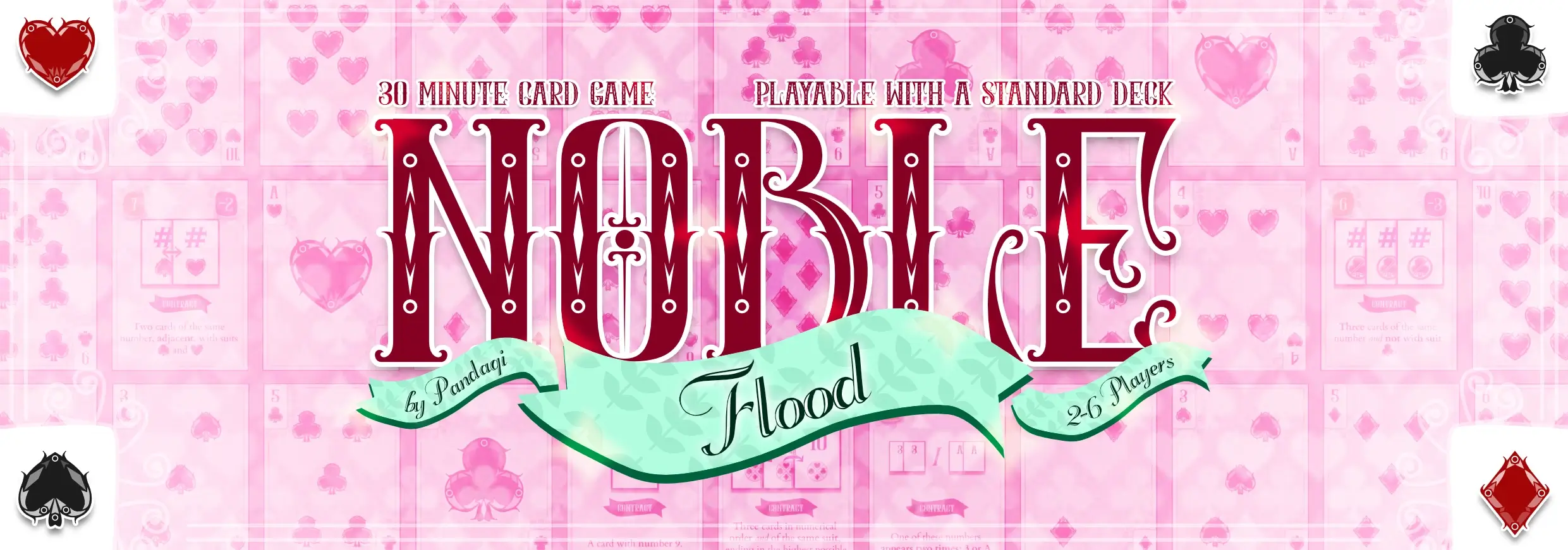Create a deck of Cards and a deck of Contracts. Assign anyone to be the Dealer.
You can print only the contracts and use a standard deck of cards. Only use the numbers 1 to 10, not the face cards. For the purposes of this game, the Ace is considered the lowest card (a “1”).
The game ends when the deck of contracts is empty. (There are too few contracts left to setup the round.)
Players sum the scores on all their contracts. A faceup contract scores its plus points; a facedown contract score its minus points. Highest score wins!
Play happens in rounds. Each round has three simple phases: DEAL, PLAY and SCORE.
The Dealer …
- Creates a row with faceup contracts, with twice as many cards as the number of players. (Draw new ones from the deck to fill gaps left by the previous round.)
- Places 3 facedown cards from the deck in a row
- Hands all players 3 cards.
The Dealer calls out one suit OR number as the wildcard for this round.
Now take clockwise turns from the Dealer picking contracts. Continue until all players have passed.
- The Dealer must pick at least one contract.
- Everyone else may pick one on their turn.
- When you’re satisfied with your contract(s), say “pass” and you get no more turns this phase.

Keep taking clockwise turns from the Dealer until everyone is out of hand cards.
On the Dealer’s turn only, they start by flipping a facedown card faceup.
Then, on your turn, you must play a hand card.
Either its suit or its number must match all adjacent cards.
There are a few exceptions to this.
- If a suit or number matches the wildcard (called out by the leader), it can be anything you want.
- The maximum map size is 5 by 5 cards.
- If you can’t legally play a card, reveal a card from your hand and discard it.

All players check if their contracts have been met.
- If so, place the contract faceup before you.
- If not, place it facedown before you.
Finally, a few clarifications on terminology in the contracts:
- A “row” is any row (horizontal line of cards) or column (vertical line of cards) in the map.
- “Adjacent” means the cards are horizontally or vertically next to each other. (You can create a “path” through the map, jumping from card to card, that passes this set of cards precisely.)
- “Numerical order” means each card is exactly one number higher than the previous.
The Dealer moves one player clockwise. Next round!

Played the game a few times and ready for more challenge? You’re in the right place! Try any of the expansions below.
With 2 players, it’s recommended to increase the number of cards per round.
- The map starts with 5 facedown cards.
- As expected, you also get 5 cards in your hand.
- At the start of the round, you draw three times as many contracts as the number of players.
This is a variant that requires no extra material.
On your turn, you’re also allowed to switch contracts.
- Swap a contract for one still in the market. If none exists, swap with the contract of another player.
- Pay for this by revealing your entire hand to everyone.
- You can only swap for a contract with a lower reward (than the one you’re giving away).
- If you didn’t start with a contract, you can’t do this.
This expansion adds action cards ( = extra material to print and cut).
These trigger a certain ability or rule, usually when played. They explain themselves.
This expansion adds more (special) contracts ( = extra material to print and cut).
These contracts add a few more options and variations. Most importantly, some also add rules or powers while you have the contract. They explain themselves.
